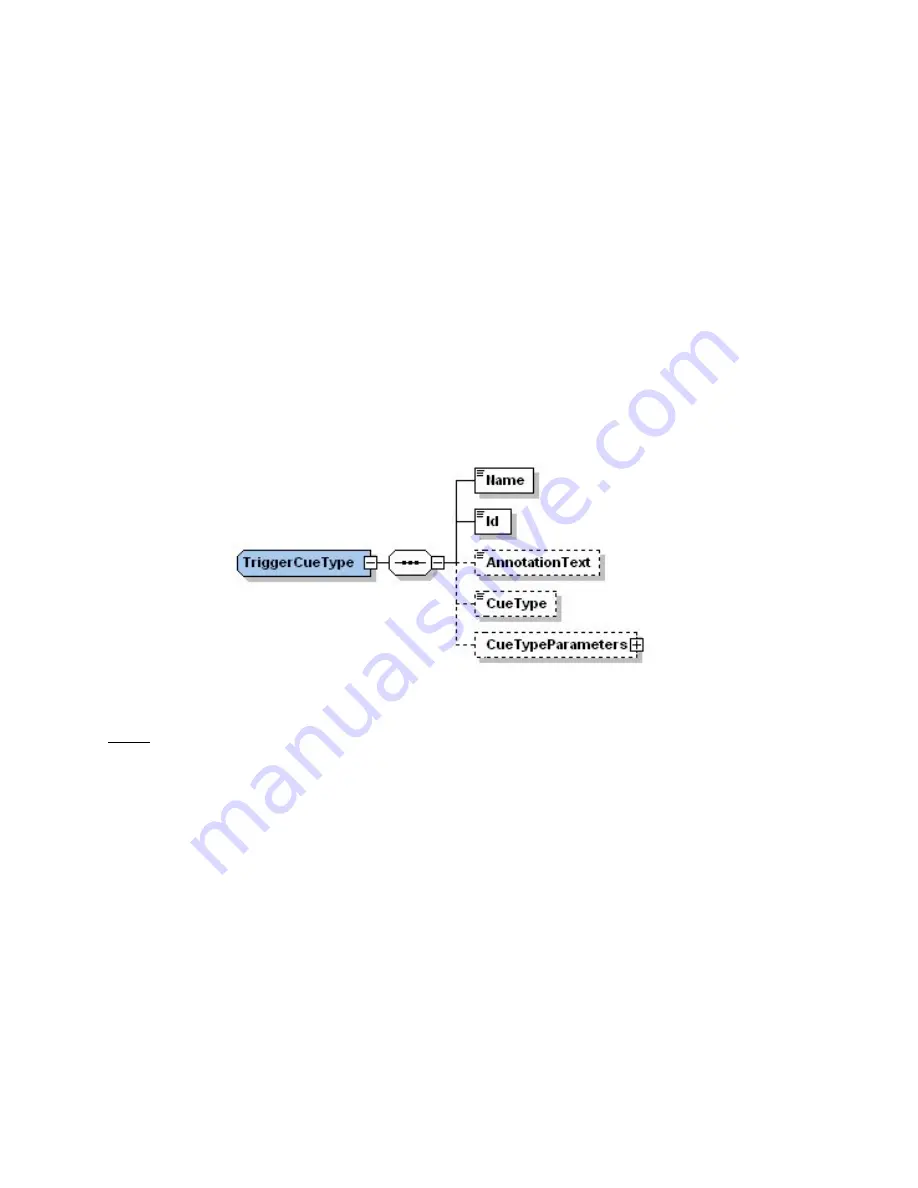
12.2.6.6 DeviceName Sub-Node (optional)
The DeviceName element is only to be present for the “DeviceRawSendMessage” command. It
will contain the name of the device to which the message has to be sent.
12.2.6.7 MessageType Sub-Node (optional)
The MessageType element is only to be present for the “DeviceRawSendMessage” command.
It will define the type of the message (text and binary).
12.2.6.8 Message Sub-Node (optional)
The Message element is only to be present for the “DeviceRawSendMessage” command. It
contains the actual message to be sent to the device.
12.2.7
TriggerCue Node (optional)
Each TriggerCue element corresponds to all the parameters defining a TriggerCue. These
parameters are recorded in the sub-nodes presented in the following paragraphs.
Figure 82: TriggerCue Structure
Note:
Dotted lines denote optional elements that can be omitted during the creation based on
Macro Editor.
Several TriggerCue elements can be generated. They have to be put back to back at the XML
level (see Figure 79 above).
A TriggerCue node without CueType and CueParameter element can be used to generate a
Trigger Cue executing no command. It will be used to maintain portability between theaters. In
such a case, the only required sub-elements are the Name and the "ID" element below.
12.2.7.1 Name Node
The Name element is a human-readable annotation corresponding to the name given to this
TriggerCue when it was created. It is the name chosen by the user in Figure 47 for the field
“Name of the Trigger”.
12.2.7.2 Id Node
The "ID" element uniquely identifies the TriggerCue for asset management purposes. It is
encoded as a urn:uuid per [RFC 4122].
_____________________________________________________________________________________
SHV.OM.001293.DRM
Page 79
Version 1.3
Doremi Cinema LLC Confidential






























